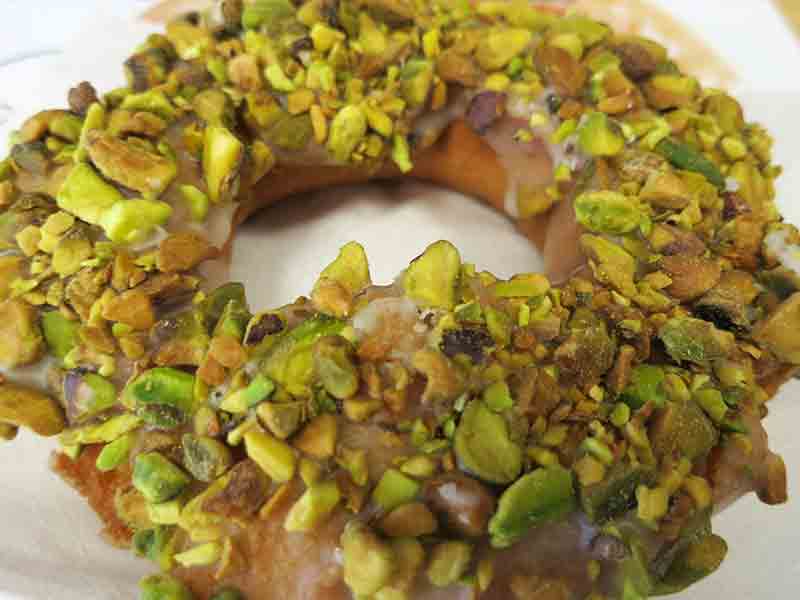Last time, we looked at why it seems that honey cake, despite being a famous Rosh Hashanah food, can’t get no respect – at least from many Jewish food writers. Today, those same writers take up the challenge in pursuit of honey cakes they would be proud to serve on their own holiday tables.
“Every honey cake I have been forced to try has been wretched (apologies if it was yours),” writes Deb Perelman. So she decided to make things right. She had heard very good things about Marcy Goldman’s recipe and decided to give it a whirl. Although the loaves had fallen (which Deb admits may be her own doing), she says “This honey cake is perfect. It’s warmly spiced and crazy moist and soft and plush with a little crisp edge about the corners…” And it most certainly lives up to its title, Majestic and Moist Honey Cake.
Arthur Schwartz did some searching and sampling, and he says (perhaps with a dash of reluctance) that “the one I would most likely bake if I was forced to bake a honey cake is from Levana Kirschenbaum’s new book, Levana’s Table … She is Moroccan and her honey cake reflects her native cuisine’s love of lavish seasoning. The cardamom in the recipe adds an exotic aroma. The ginger adds a good peppery bite to the aftertaste.”
In this New York Times piece and accompanying video, Melissa Clark prepares a honey cake with olive oil, red wine and plenty of spices. “I’ve always thought that all Rosh Hashanah honey cakes were born out of the same kosher recipe,” Clark writes. “My grandmother certainly made it, the one with the vegetable oil and coffee that always came out far too sweet and much too dry. I never liked it.”
So she decided to do something about it. Start from scratch. Goodbye vegetable oil. Hello olive oil for an herbal, richer flavour. Out with the coffee. In with a fruity, full-bodied red wine. The result: a cake with flavours “so deep, rich and spicy that I wanted to spoon it up like pudding. It baked up into a glossy, mahogany-hued winner.”
You’d better start early if you’d like to bake Janna Gur’s Magical Honey Cake because she advises: “Pay attention: the cake should ‘mature’ for 7 days before serving.” And for a cake with a distinctive Israeli edge, there’s Tahini and Honey Cake.
To pore over even more recipes, visit the jewish-food HONEYCAKE archives where you can sample over three dozen variations including Walnuts and Cinnamon, Honey Chiffon and Almost Fat-Free. At the RFCJ Recipe Archives, there’s Honey Cheesecake, Alsatian Pain d’Épice, and Honey Blueberry.
Although those recipes may be delicious, they still may not be right for all households especially if you are baking for someone with a food allergy or sensitivity. The Gluten-Free Bay website has a recipe for people who cannot tolerate gluten. And for people who would like to distance themselves from honey in their honey cake(!), there’s the Paleo No-Honey Cake.
In my last column, I told you about how honey cake created a special bridge between a granddaughter and her zadie. Heaven forbid we should forget the bubie! Tammar Stein isn’t looking for a new recipe. She’s quite pleased with what she has, thank you. As Stein has moved from her native Israel (where her late great-grandmother lived and her grandmother lives) to the U.S. (where her mother lives) and then to Germany (where she lives,) honey cake has been a constant.
“On three continents, three different time zones, three different languages playing on the radio, we were united. I felt their echoes in my batter. Felt their warm breath as I opened the oven. And when my cakes were ready, filling the house with that wonderful rich smell, looking so familiar, I knew that my great-grandmother was still with me, her blessings and sweet wishes as fresh and alive as when I was a child. I could feel my grandmother’s love and my mother’s love unite us across oceans and I knew, this year would be just wonderful.”
Shana tova u’metukah. Have a good and sweet New Year.
